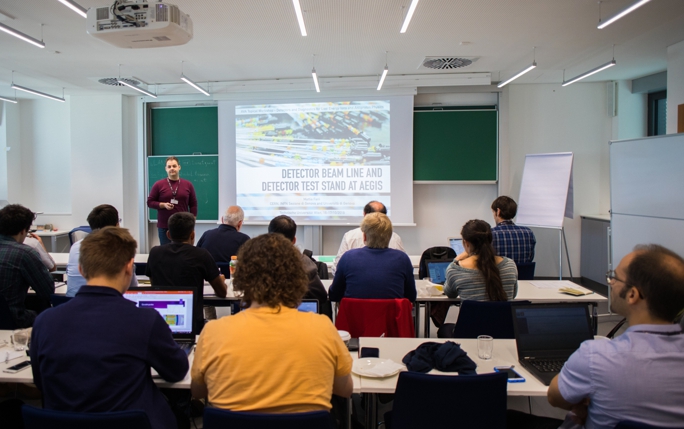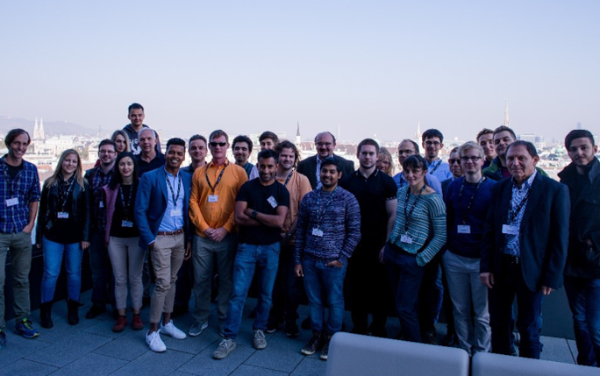How to characterize antimatter beams?

Antimatter particles, such as positrons, antiprotons and antihydrogen open unique insight into some of the most fundamental questions in modern physics. However, they are not only very difficult to produce – they also pose numerous challenges when it comes to measuring their properties in detail.
Around 30 experts from all over the world came together for a three-day Topical Workshop on Diagnostics and Detectors for Low energy Ion and Antimatter Beams in Vienna, Austria between 15-17 October 2018.
The event covered the challenges in the design and operation of advanced detectors and beam instrumentation to optimize the performance of the antimatter facilities AD and ELENA at CERN, as well as the future FLAIR facility at FAIR in Germany.
The workshop was organized in the frame of the pan-European AVA network and was kicked off by the project coordinator Prof Carsten Welsch. Prof Welsch explained the project background as well as challenges related to low energy beam diagnostics. He was followed by Professor Paolo Crivelli from ETH Zurich who gave a comprehensive overview of Instrumentation for Antimatter Beams, triggering many interesting questions. Presentations by other workshop participants, including a number of AVA Fellows then explored various detectors in more detail. Particular challenges arise when very long lifetimes are targeted in experiments and this typically requires a cryogenic environment. Dr Stefan Strahl, CEO of Stahl Electronics in Germany, presented the state-of-the-art in Cryo Detector Technology.

Photograph of the workshop participants.
The second day of the workshop was started by Dr Angela Gligorova from SMI in Vienna with a presentation about Solid State Detectors for Antimatter Experiments. She presented technologies used across the different AD experiments, including Silicon pixel and strip detectors, how they are used in the respective experiment and what their limitations are. Presentations about a number of novel diagnostic techniques, including liquid target-based detectors and gas jet-based techniques followed in this session. The final session on Wednesday afternoon was started by Dr Gunn Khatri who focused on Sensors and Instrumentation for Trap Experiments. The specific geometrical constraints of traps make the detailed diagnostics of stored particles particularly challenging and despite more than 30 years of studies into storing and analysing antiparticles, technological advances are still required to measure the properties of these elusive particles in better detail. Presentations about specific experiments and their respective diagnostics challenges completed the interesting workshop program.
All presentations are available via the event indico page. The AVA project will next organize a workshop on Low energy facility design and optimization. This event will take place on 6/7 February 2019 and registration will open this month and be announced via the AVA homepage.